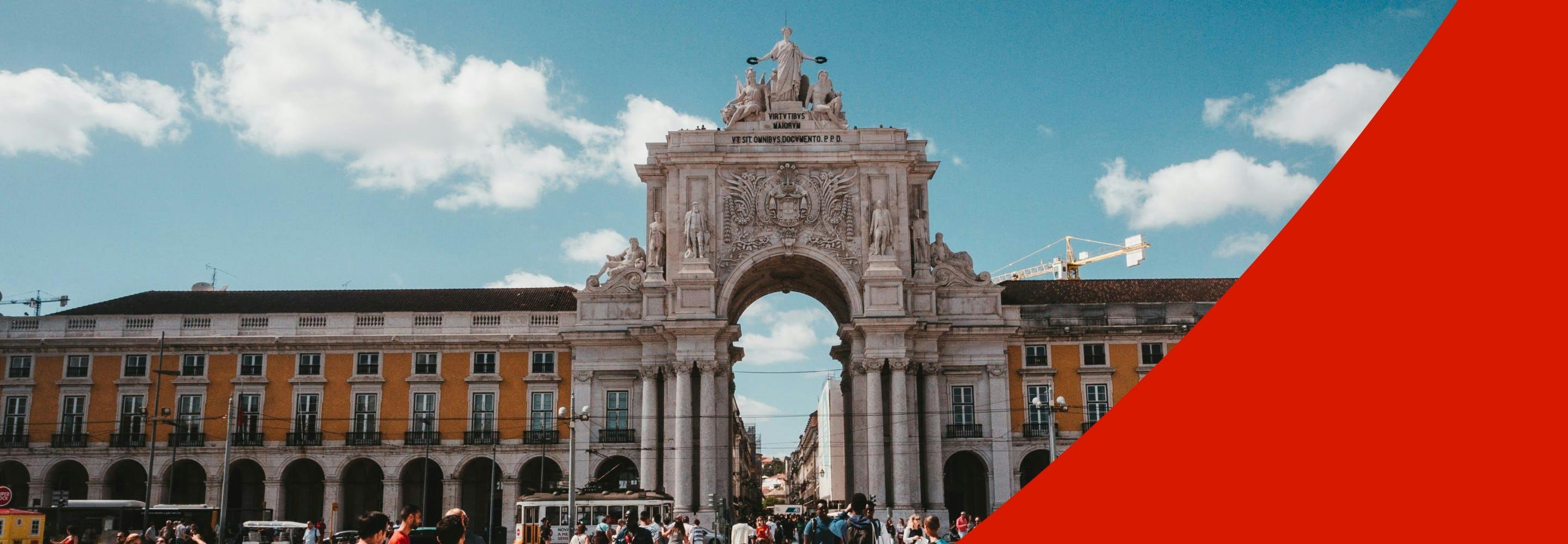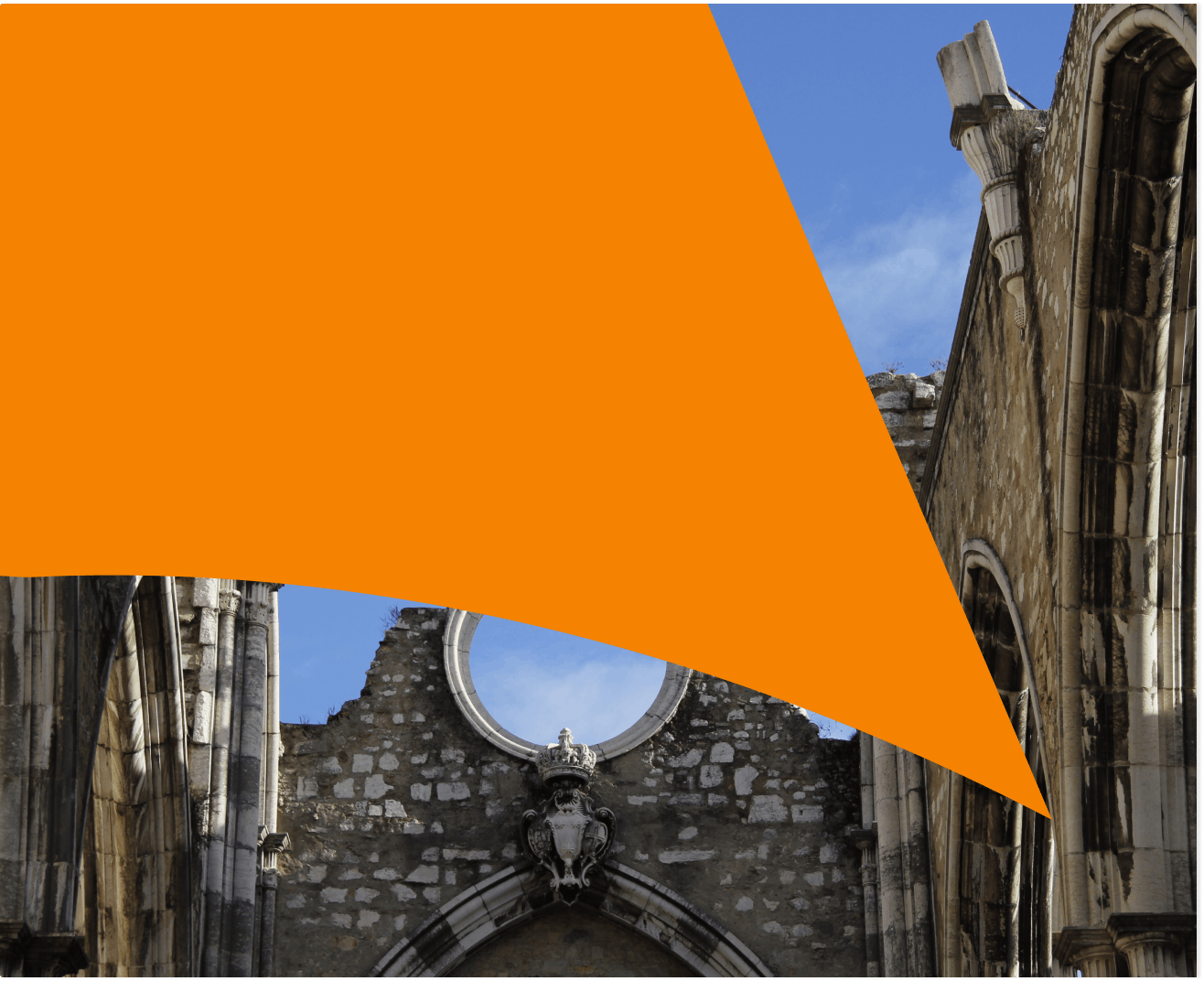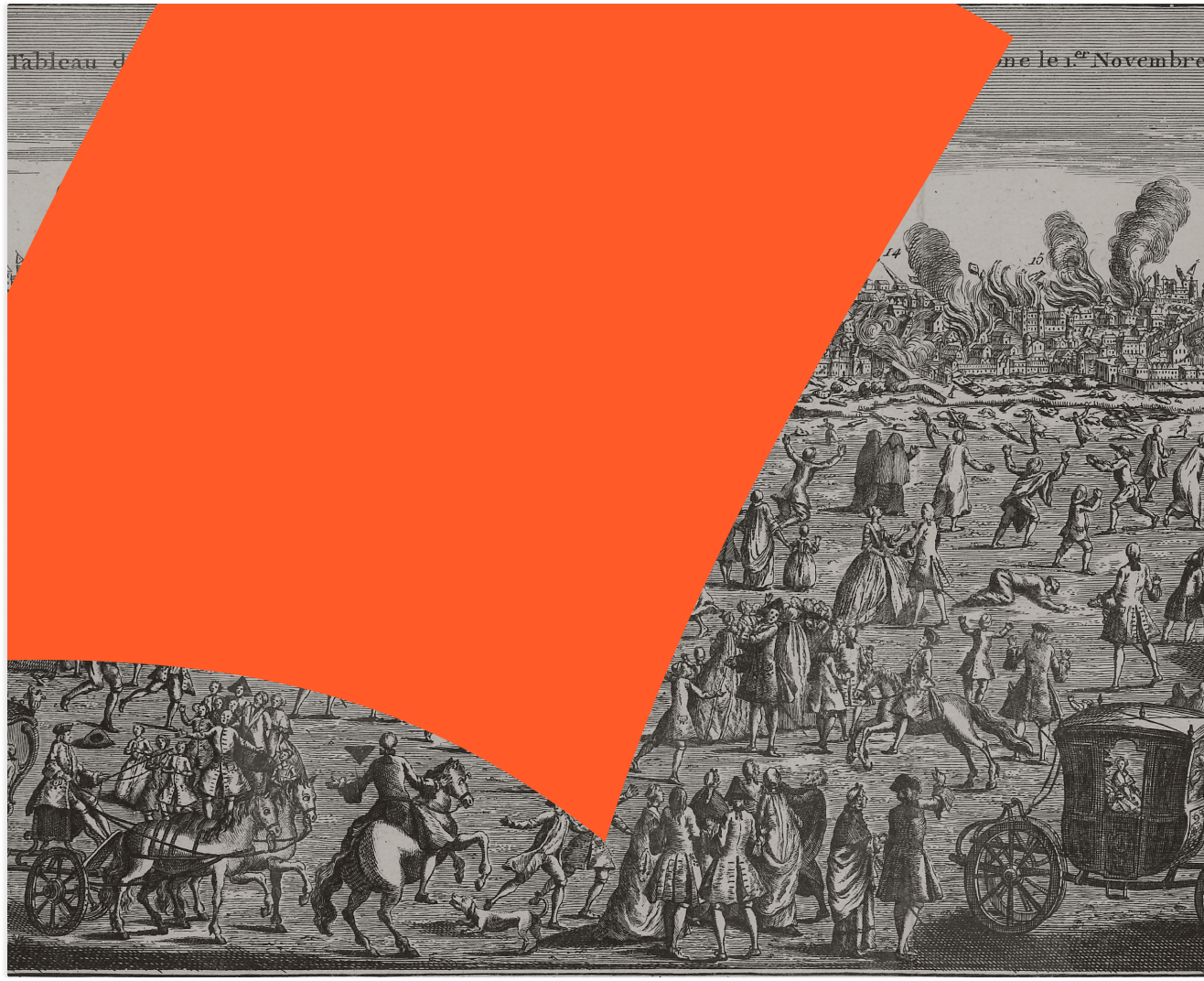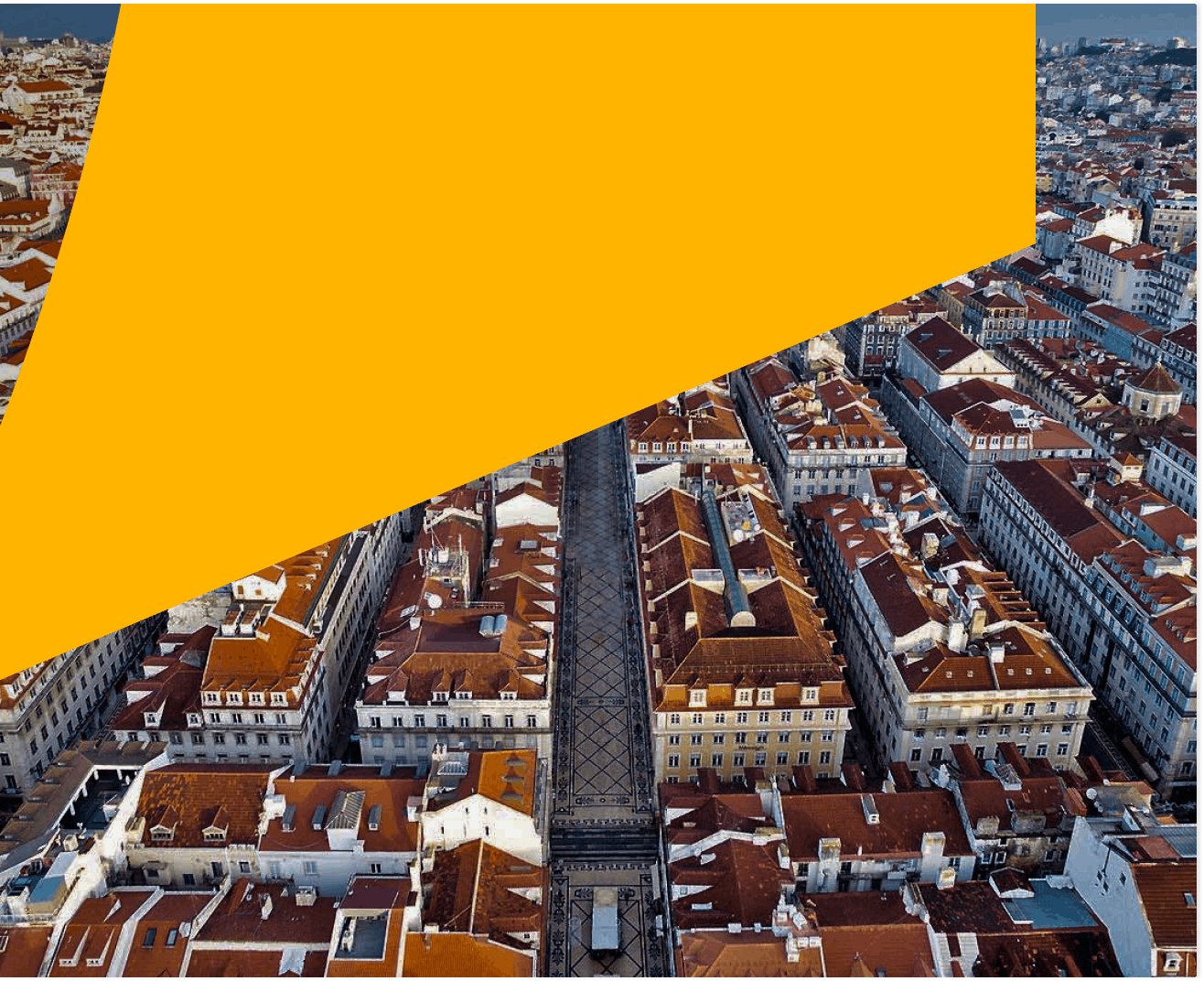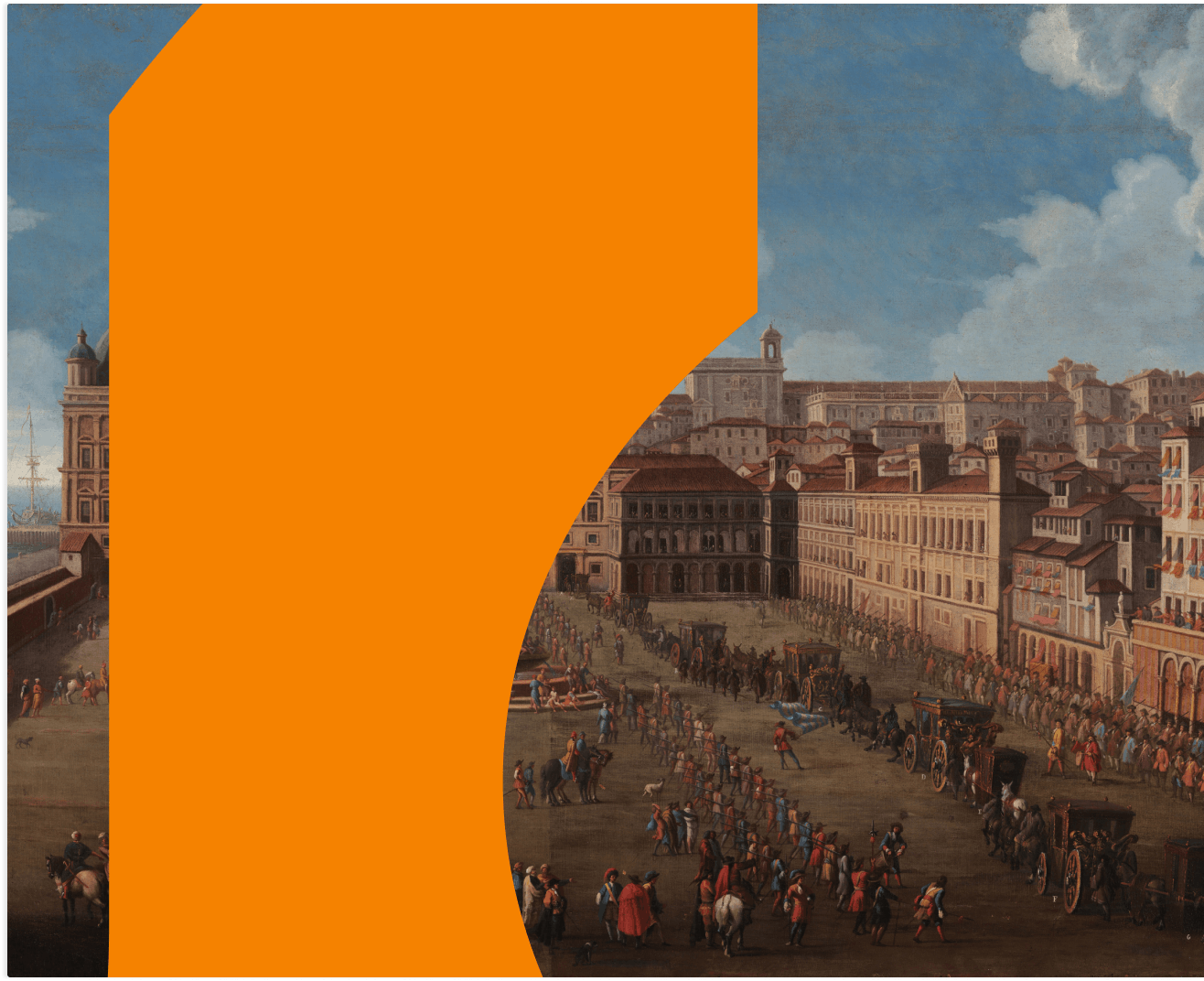On the 1st of November 1755, at around 9:40 AM, an intense earthquake hit the city, destroying most of its buildings, streets and squares. A tsunami followed the earthquake, between 60 and 90 minutes after the shakes, with waves of around 5m height coming from the Tagus river and flooding the city riverside, about to where is today Arco da Rua Augusta. Simultaneously, fires propagated, originated by the stoves in the houses and the candelabra in the churches, but also set by criminals that took the chance to plunder palaces and churches. D. José I and his family survived the Earthquake due to the princesses wishing to spend the public holiday at their countryside residence, the Royal Palace of Belém. The area of Belém, considered at the time one of the outskirts of the city, was populated by only palaces and farms, therefore, the effect of the earthquake was not as devastating as in the city.
Studied soon after its occurrence by countless figures linked to the social sciences, it was Kant who gave the discussion a more scientific approach, trying to explain the earthquake by implosions that occurred underground, that would happen especially in places near rivers or the sea, which were filled with water, as it was Lisbon. More than 265 years have passed since the fateful day and many were those who afterwards dedicated themselves to the study of the Great Lisbon Earthquake, researching to discover its most likely origin and the real impact it had in Lisbon and in the rest of world.
